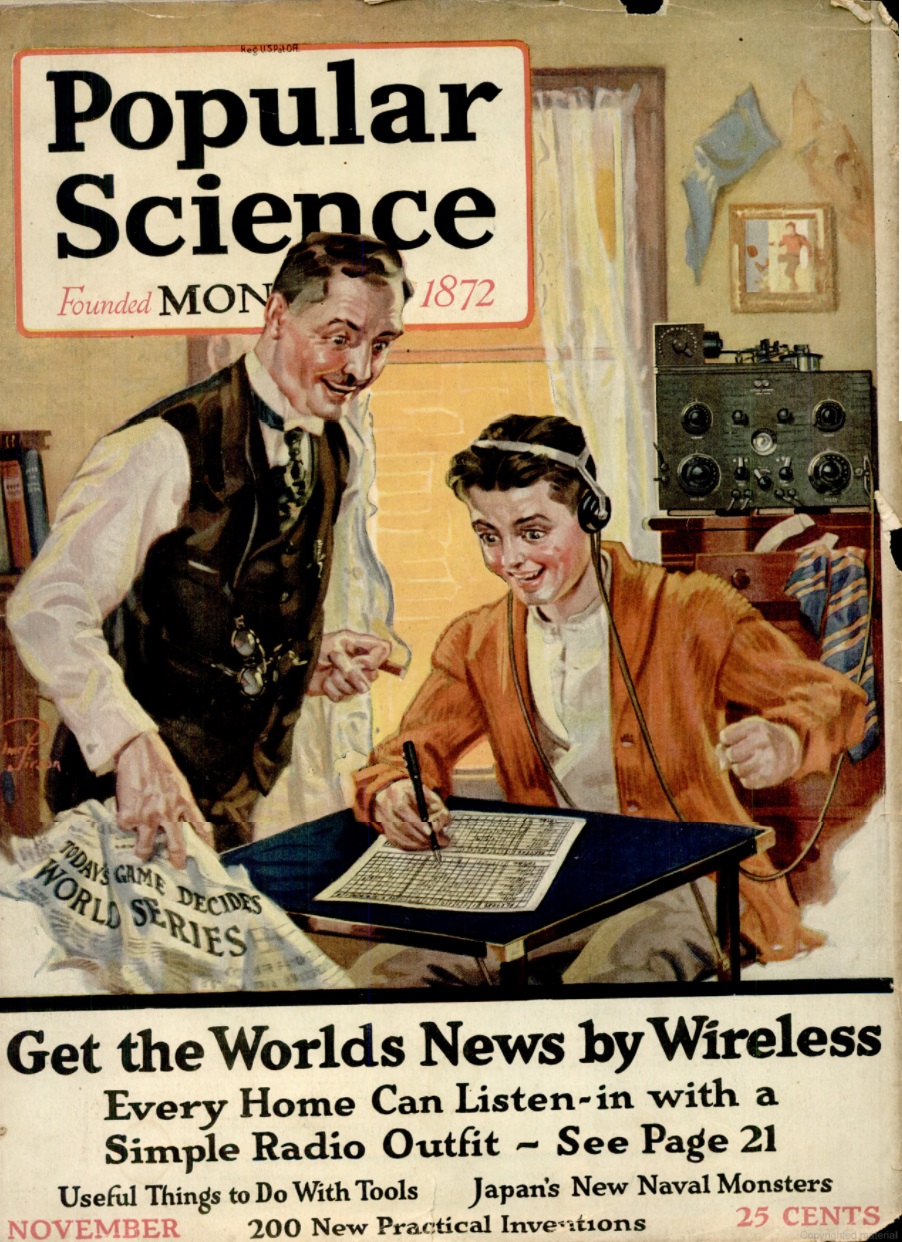 A hundred years ago, radio was definitely ready for prime time, as made clear by the cover of the November 1921 issue of Popular Science. This father-son team had caught the radio bug, and they were apparently Giants fans. The newspaper indicates that they’re listening to the final game of the 1921 World Series, which the Giants clinched on October 13.
A hundred years ago, radio was definitely ready for prime time, as made clear by the cover of the November 1921 issue of Popular Science. This father-son team had caught the radio bug, and they were apparently Giants fans. The newspaper indicates that they’re listening to the final game of the 1921 World Series, which the Giants clinched on October 13.
The accompanying feature article by Armstrong Perry telling how he listened to the world, and how easy it was for others to get into the radio pastime. The magazine noted that radio was catching on like wildfire. There were a million fans already, and the thig had just started.
When he started, Perry thought of radio as something like a fire extinguisher on a lifeboat–something for use only in an emergency. But once he tried it out, he was in for a great awakening of the romance of radio. A friend talked him into buying the cheapest possible receiving set, consisting of a detector, headphones, and some wire for aerial and ground. The second he hooked it up, he heard jazz through the headphones and was hooked. He also heard Morse code, and when he started hearing the same patterns at the same time each night, he wrote down the dots and dashes, and was able to translate the first message:
QST QST QST de NAH NAH NAH.
Amateur Broadcast: If you are interested in this broadcast, please advise by mail, United States Navy, Radio Amateur Bureau, New York.
At once, he wrote a letter saying that he was very much interested. He received a form to return, and was soon registered as an amateur.
One night, to my astonishment, I found my own name at the beginning of a message. Imagine the thrill with which I took out of the air a reply by the Navy Radio Amateur Bureau to a letter I had written them the day before! Let me tell you that it’s the thrill of a lifetime when your government first communicates with you direct by wireless, and you get the message out of the air yourself.
Perry writes of some of the other thrills of the airwaves, such as hearing an SOS, and then hearing announcements by NAH to clear the air for the emergency traffic. You can read more on that subject at this post.
The article author, Armstrong Perry, was also an official of the Boy Scouts of America, and was the author, the same month, of a letter to the editor of QST promoting another service offered by NAH. Every Wednesday evening at 9:30 PM Eastern Time, the station transmitted on 1500 meters a special bulletin for scouts. It was transmitted by spark at 10 words per minute, and Perry pointed out that all scouts learned the Morse code. You can find more information on these broadcasts at our earlier post.
The magazine undoubtedly expected that many would be bit by the radio bug by Armstrong’s article, and the magazine promised forthcoming articles on building a set.
